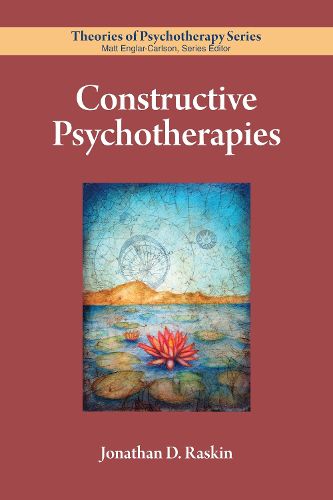Readings Newsletter
Become a Readings Member to make your shopping experience even easier.
Sign in or sign up for free!
You’re not far away from qualifying for FREE standard shipping within Australia
You’ve qualified for FREE standard shipping within Australia
The cart is loading…






This book examines the history, theory, practice, and empirical evidence for constructive psychotherapy.
Human beings exist within a context that is constructed by our language, worldview, and the stories we tell. Alone and in concert with one another, we construct meaningful understandings of the world. Because the invented nature of our reality is so often forgotten or overlooked, we can easily find ourselves trapped in prisons of our own making. Constructive theories are therefore useful to psychotherapists, who work with clients at the intersection between constructed meaning and experiential reality. Constructive therapies enable therapists to disrupt and reinterpret the meanings clients assign to their experience, and then initiate reconstruction processes that can open clients up to new possibilities.
Chapters in this volume describe the history and theory of constructivism and constructive psychotherapy, examine the key therapeutic aims and techniques of constructive therapy, provide a nuts-and-bolts description of the therapy process, and summarize the empirical evidence for the effectiveness of this therapy.
$9.00 standard shipping within Australia
FREE standard shipping within Australia for orders over $100.00
Express & International shipping calculated at checkout
This book examines the history, theory, practice, and empirical evidence for constructive psychotherapy.
Human beings exist within a context that is constructed by our language, worldview, and the stories we tell. Alone and in concert with one another, we construct meaningful understandings of the world. Because the invented nature of our reality is so often forgotten or overlooked, we can easily find ourselves trapped in prisons of our own making. Constructive theories are therefore useful to psychotherapists, who work with clients at the intersection between constructed meaning and experiential reality. Constructive therapies enable therapists to disrupt and reinterpret the meanings clients assign to their experience, and then initiate reconstruction processes that can open clients up to new possibilities.
Chapters in this volume describe the history and theory of constructivism and constructive psychotherapy, examine the key therapeutic aims and techniques of constructive therapy, provide a nuts-and-bolts description of the therapy process, and summarize the empirical evidence for the effectiveness of this therapy.